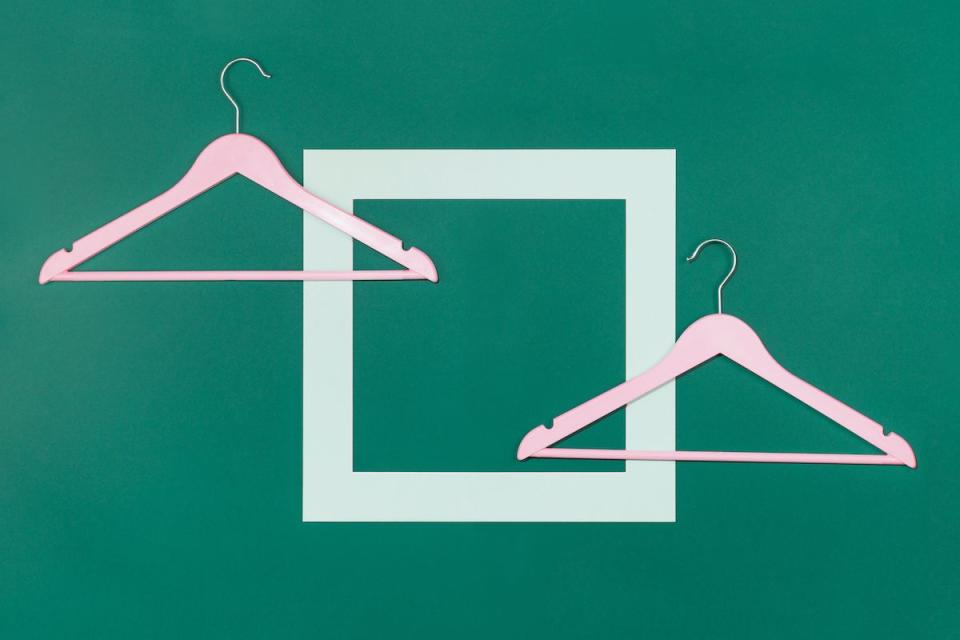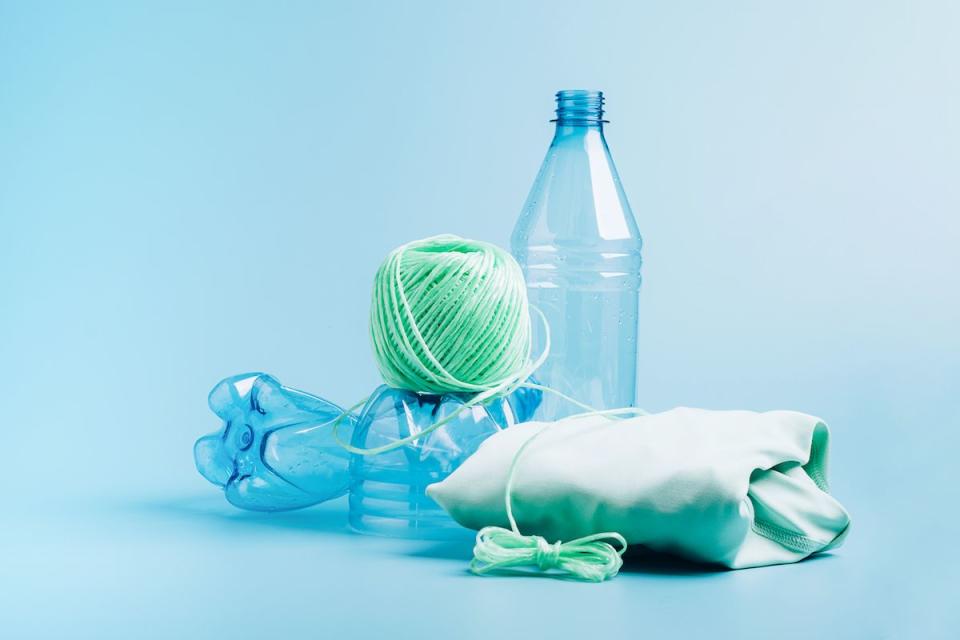6 ways to make your wardrobe more eco-friendly

It may have taken 17 years, but finally Kate Sanders can no longer be considered cooler than Lizzie McGuire (not that we ever thought that anyway).
You see, in 2021 we should all be outfit repeaters in order to do our bit to fight climate change and tackle global warming.
Fashion on Climate, a report in partnership with the Global Fashion Agenda, found that in 2018 the fashion industry produced 2.1 BILLION tonnes of CO2. That’s a carbon emission share larger than that of France, Germany and the UK combined.
It really puts the longing for that crochet dress you’ve been seeing all over TikTok into perspective, doesn’t it?
However, we know how good a new outfit can make you feel, whether it’s for that all-important job interview or that all-important first Hinge drink.
None of us are perfect, and small steps towards reducing our own carbon footprints are better than none at all.
Here are six ways you can shop more consciously and build a more eco-friendly wardrobe.
1. Do a charity-shop challenge
Do you remember that Zara coat? You know, the one that was recognised so regularly it got its own Instagram account? What about that white and black spotty skirt? If you don’t want to get on the bus and smile awkwardly at your doppelganger, second-hand shopping is where it’s at.
Organise a shopping day, but make it a charity shop-only challenge. If you’re London-based, ELLE UK teamed up with fashion insiders to bring you your very own little black book of the best charity shops in town.
2. Know where to look for size-inclusive finds
We know how difficult second-hand shopping can be if you’re plus-size, which is why it might be worth reactivating your Facebook account and joining selling groups instead.
Fuller Figure Wardrobe is one of those groups where you can buy and sell your clothes with no size restrictions, while Vinted and Depop make it easy to search for second-hand finds by your size.

3. Get upcycling
We’re going to assume that you’re already recycling your unwanted clothes to clothes banks and charity shops, but remember that the aim is to reduce the turnover cycle. Those jeans that don’t fit you any more? Take them to your local tailor, along with the top you never got round to returning because it didn’t fit right.
When your leggings get that all-too familiar hole in the crotch, sew them up, or make like your nan and cut them into rags for household cleaning.
We all laughed at our nans dusting with a pair of old knickers, but we really need to start channelling their make-do-and-mend energy.

4. Shop sustainable edits
If you’re not second-hand shopping, look out for sustainable edits. On ASOS there’s actually a ‘Responsible’ search filter, which allows you to choose between recycled and sustainable materials, while George at ASDA now have a vintage offering, alongside styles with recycled buttons and fabrics.
Primark has ‘Primark Cares’ labels inside items of clothing to show which are made using its sustainable cotton programme, while H&M’s Conscious products are identified by a green tag, which means they contain at least 50% sustainable materials.
Remember though, your aim is always reducing your consumption, so don’t buy anything that you can’t see yourself still loving and wearing this time next year.
5. Check your labels
If you’re buying new clothes, treat them like your skincare products and get used to checking what they’re made of. Try to avoid synthetic fabrics, which release harmful microfibres into our waterways when we wash them, and instead look for natural, sustainable options like Lyocell (or Tencel), cork, organic cotton, seaweed, bamboo and hemp.
We know it’s hard to avoid all artificial fibres (after all, we all love a stretchy jean) but look out for new materials like Econyl, which is regenerated nylon made from ocean and landfill plastic waste.
Remember, polyester and nylon are non-biodegradable, so if you’re buying items containing those materials, make sure they’re long-term-use items.
6. Get renting
Not only is renting your clothing a much more sustainable option, but it’s also cheaper. It can allow you to partake in trends without feeling the guilt. I bet you didn’t know that Selfridges allows you to rent clothing from its site?
That Palm Angels hoodie you’ve been debating? Try it for £57 instead of £785. Want to look like a child of Kris Jenner? A Balmain blazer could be yours for £145. That tiny Jacquemus bag you’ve seen Molly-Mae wearing? Instead of buying it and wearing it for one season, rent it for £32.
Most of all, just remember we’re all imperfect human beings. Don’t beat yourself up if your wardrobe doesn’t meet David Attenborough’s guidelines, but also normalise repeating outfits and getting the most out of them.
For planet-friendly fashion that won’t cost the earth, shop at george.com
You Might Also Like

